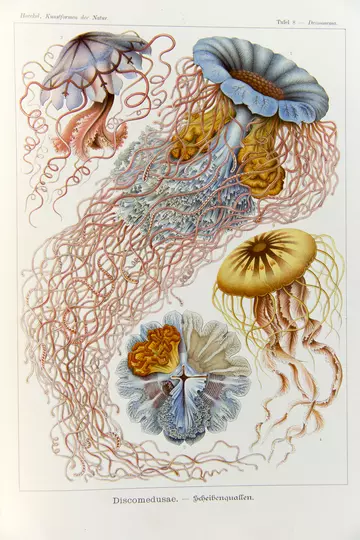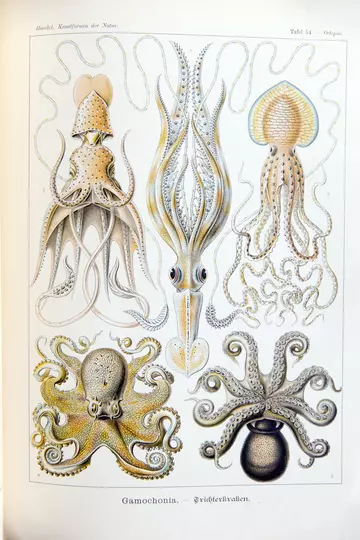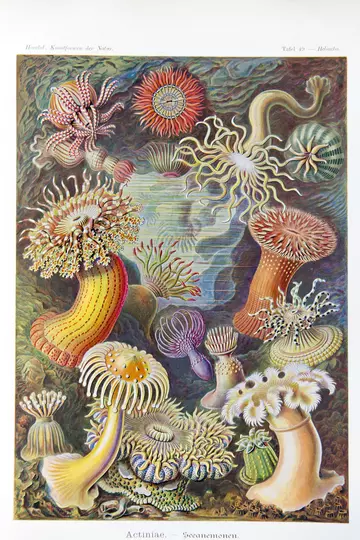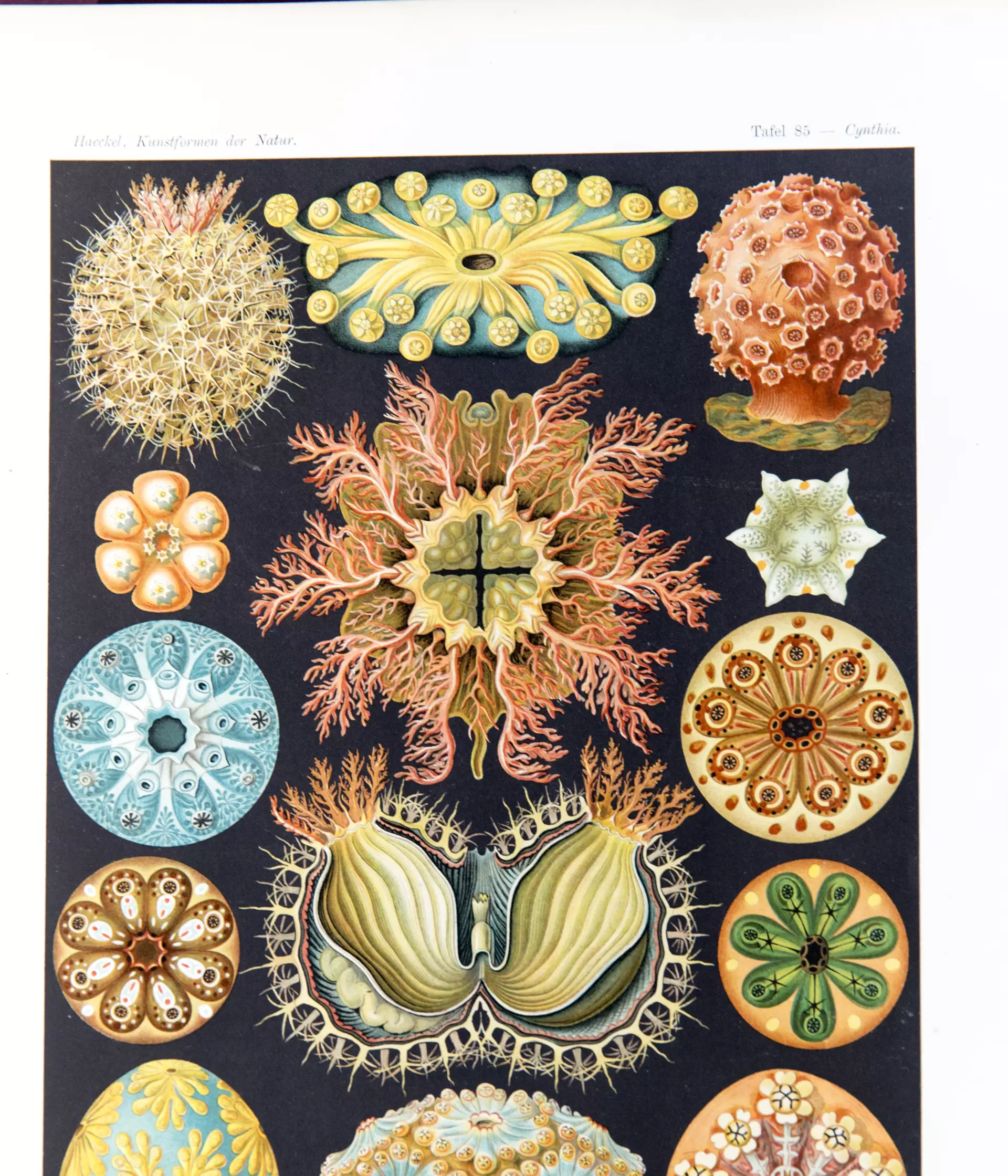
Ann Sylph, MSc, MCLIP
ZSL Librarian
Ernst Haeckel's images are astonishing, beautiful and scientifically accurate.
Since their publication in Kunstform der Natur – Artforms in Nature between 1899 and 1904, they have inspired so many artists, designers and architects. Both science and art are so vital to human culture and Haeckel links the two. His images are appropriate for exhibition at The Deep as he worked for many years as a marine biologist.
Haeckel was a devoted scientist and talented artist. His amazing works are still so fresh and relevant, they are studied today by art students in schools and colleges for both GCSE and A-level.
As a former ecology student myself, I also find it inspiring that he coined the word 'ecology' for the science of studying interactions of organisms and their environment.

Who was Ernst Haeckel?
- He was born in Potsdam in 1834, following his father’s wishes he enrolled in medical school, however, he did not practice as a doctor for long but devoted himself to zoology and art.
- In 1857 he earned his doctorate with a dissertation on the tissue of river crabs.
- In Sicily he studied marine organisms, finding, describing and illustrating many new species of Radiolaria, single-celled marine organisms.
- He was a Professor of Zoology in Jena.
- Following the publication of Darwin’s On origin of species he became a strong defender of Darwinism and this influenced his own work. His own published works on Darwinism were translated into many languages and it is though that more people learned about evolutionary theory from Haeckel than from Darwin!
- He studied some of the animal groups collected on the British deep-sea Challenger Expedition (1872-76)
- He died in 1919 at his home, `Villa Medusa’
Artforms in Nature
Artforms in Nature revealed the beauty of so many organisms including many only visible using a microscope. His work particularly influenced the blossoming Art Nouveau movement. The images are beautiful, and the animals are arranged with symmetry on the page and highly decorative manner.
Are the images 'art'? As an ecologist turned information specialist I do not feel qualified to judge. As his work is studied by art students I am going to say that his works can be regarded as 'art'. Decide for yourself by enjoying these amazing images, be inspired by the range of animals depicted and support conservation to ensure these and other animals have a future.

Further reading
Another biologist interested in forms and patterns was the Scottish biologist, mathematician, classics scholar and a Fellow of ZSL - D’Arcy Wentworth Thompson (1860-1948). 2017 is the 100th anniversary of the publication of his book which influenced generations of biologists - On growth and form which was first published in 1917. In the book he explains how biological forms follow mathematical and physical principles. Read more on the website celebrating this centenary.
The ZSL Library is a wonderful and unique information resource about animals and their conservation – we aim to inform, enthuse and inspire! And of course information is vitally important in conservation.

